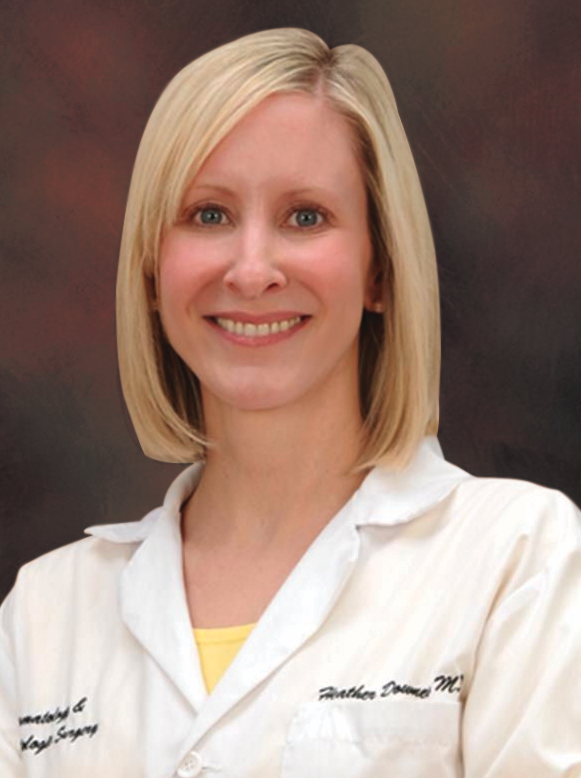Dr Downes is the founder of a direct-pay private practice in Bannockburn, IL. She is an advocate of direct-pay health care and is also a founding lifetime member of Physicians for Patient Protection (PPP), a physician organization working to ensure physician-led care for all patients.
 Q. What is the greatest political danger in the field of dermatology?
Q. What is the greatest political danger in the field of dermatology?
A. The biggest danger facing dermatology is the misuse of physician assistants (PAs) and nurse practitioners (NPs). Some are being employed at satellite clinics as independently practicing dermatologist-alternatives without onsite supervision by physicians.
Per the American Board of Dermatology, there are approximately 15,000 practicing board-certified dermatologists in the United States and Canada. Each dermatologist completed 8 years of supervised, formal medical school and residency training and passed the rigorous dermatology board exam. In addition, dermatology physician training and testing are closely regulated with oversight by government bodies. However, we do not know exactly how many PAs and NPs work in dermatology. The difficulty in counting them is that there is no standardized training for PAs and NPs in dermatology; most receive their dermatology education through informal on the job training in private practices, and they can switch around between different specialties.
Loose supervision of physician extenders has created the misconception that medical school and dermatology residency are not necessary to practice dermatology. Further, some academic medical centers have created abbreviated certificate programs in dermatology for PAs and NPs, calling them “residencies” and “fellowships.” This only confuses the general public, since residencies and fellowships are training programs that physicians complete after medical school.
Physician extenders can bring great value to the health care team, but I do believe that it is in patients’ best interest to have onsite, supervised, physician-led care. Lastly, the training and education of all health care practitioners should be open and transparent to patients.
Q. What part of your work gives you the most pleasure?
A. Treating teenage patients with acne with isotretinoin is a particularly fulfilling part of my job. It is hard enough being a teenager, but it is really tough for the kids who have severe acne on top of the usual teenage stressors. I see some of these kids hiding their faces before going on isotretinoin, but then they come out of their shells and smile as their skin clears up. It makes me feel good to have such a positive impact on these patients’ lives.
Q. What is the best piece of advice you have received and from whom?
A. When I first opened my direct-pay practice 8 years ago, one of my patients, an experienced business owner, told me that rule number one of owning a business is “control your overhead costs.” If your overhead costs run too high, you have to work that much harder before you can ever generate a profit.
I think this is an important point as health care administrative costs soar, resulting in physicians feeling they have to squeeze in a higher volume of patient visits per day to make ends meet. Direct-pay (insurance-free) dermatology practices have become a growing trend because they minimize or eliminate extra administrative expenses such as billing and coding, electronic health records, and insurance handling. They also make prescriptions more affordable by dispensing generic medications directly to patients from their front desks without pharmacy benefit managers and pharmacy pricing markups.
The end result is that dermatologists in such practices can typically spend more time with patients while offering affordable, transparent pricing without the surprise billing that is typical of insurance-based practices. Direct-pay practices offer something that patients cannot get elsewhere. This practice model does not have to suit everyone, but it suits “enough” people: those who are uninsured, who have high deductibles, who use medical cost-sharing plans instead of traditional insurance, and who want a more direct relationship with their dermatologist rather than experiencing impersonal, rushed visits and surprise medical bills typical of many large insurance-based practices.
Q. Who was your hero/mentor and why?
A. I am grateful to have spent time during my residency at USC with dermatologists such as Drs David Duffy, Heather Roberts, and Jessica Wu, who first introduced me and other dermatology residents to the concept of direct-pay dermatology. I’m also grateful to have worked with Dr Julia Marshall, who had the first direct-pay dermatology practice in the Chicago, IL, area. From these pioneers I learned that health care can be an unconflicted, direct relationship between a physician and a patient, rather than a contractual relationship between the physician, a health insurance company, and a patient, which creates many conflicts of interest.
I am also grateful to all the physicians in PPP who dedicate their time lobbying for patient safety, physician-led care, and health care provider transparency.
Q. Which patient had the most effect on your work and why?
A. I have had several patients over the years whose presenting complaint was relentless itching. When patients cannot sleep at night because they cannot stop scratching, they are truly miserable and nothing else in the world matters. What were the causes of their itching? One had leukemia, one had scabies, one had a drug eruption, one had bullous pemphigoid, and another had an allergic contact dermatitis to her La-Z-Boy recliner! Medical dermatologists are these patients’ saving grace. We are the physicians with the skills and knowledge to figure out these tough cases, and it is truly satisfying to be the detective who can diagnose and help them.
























